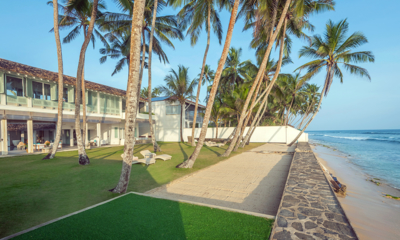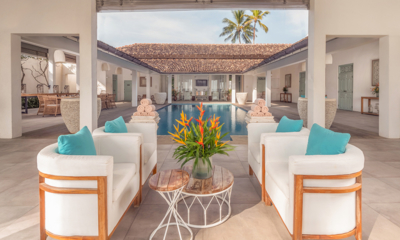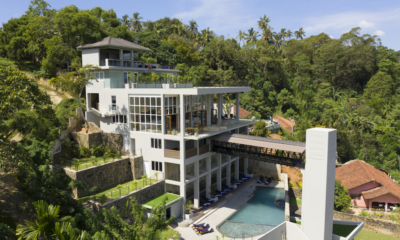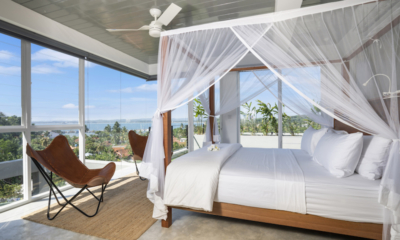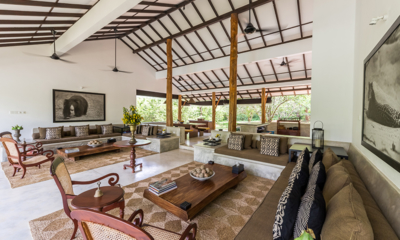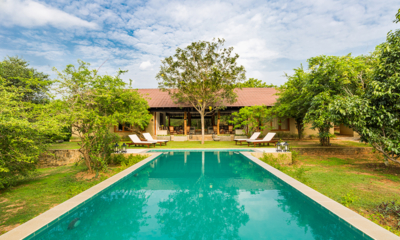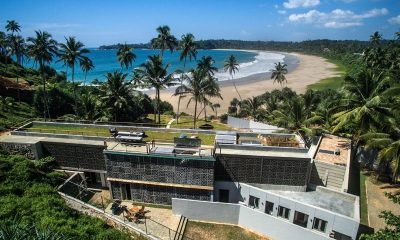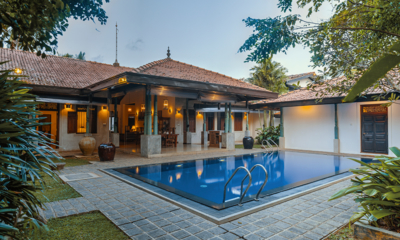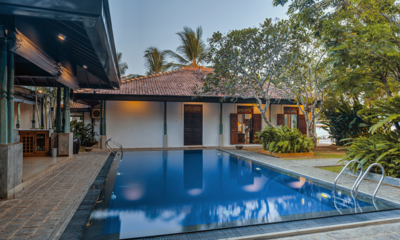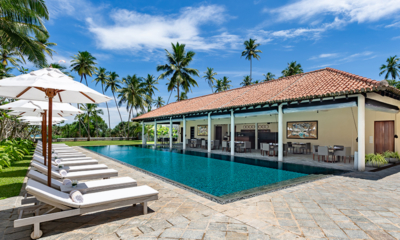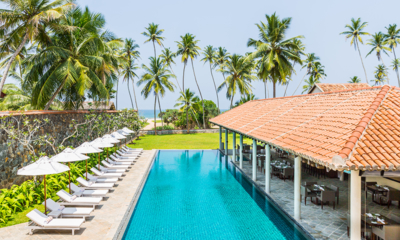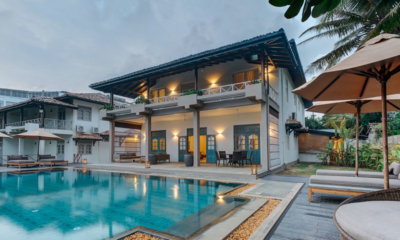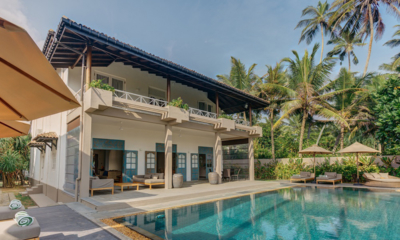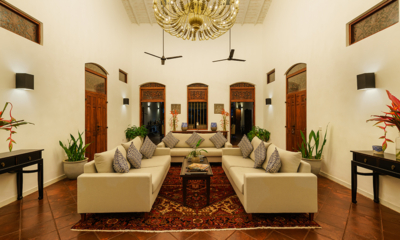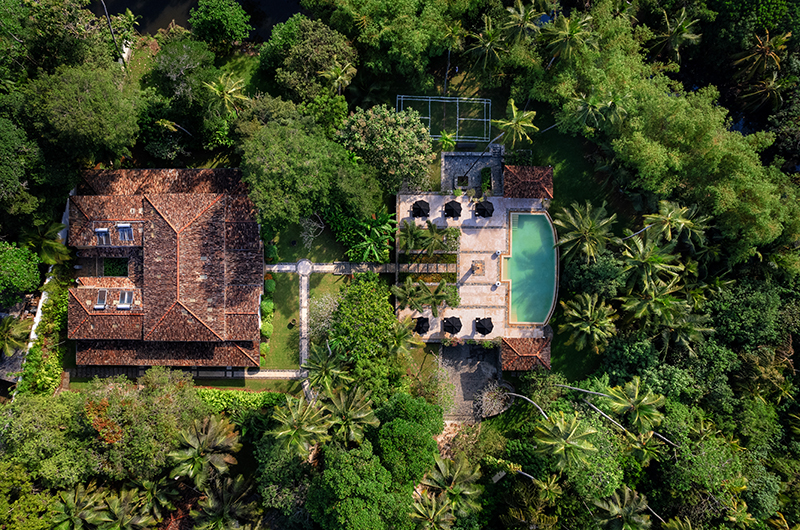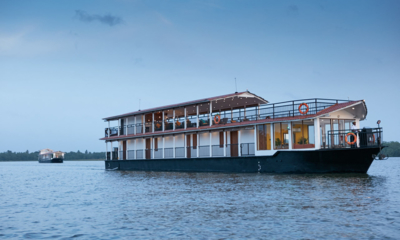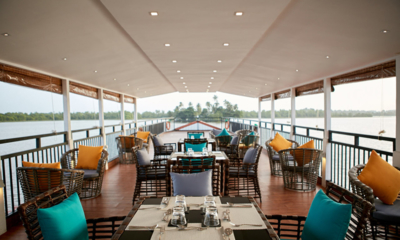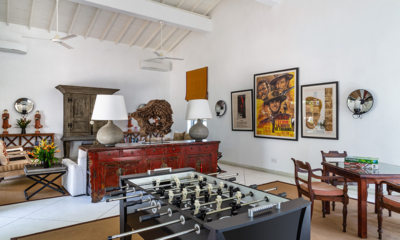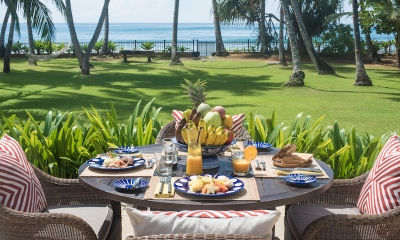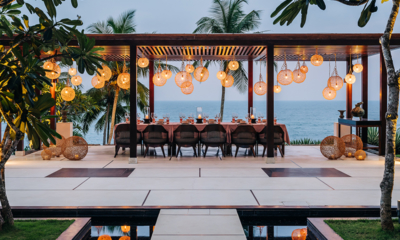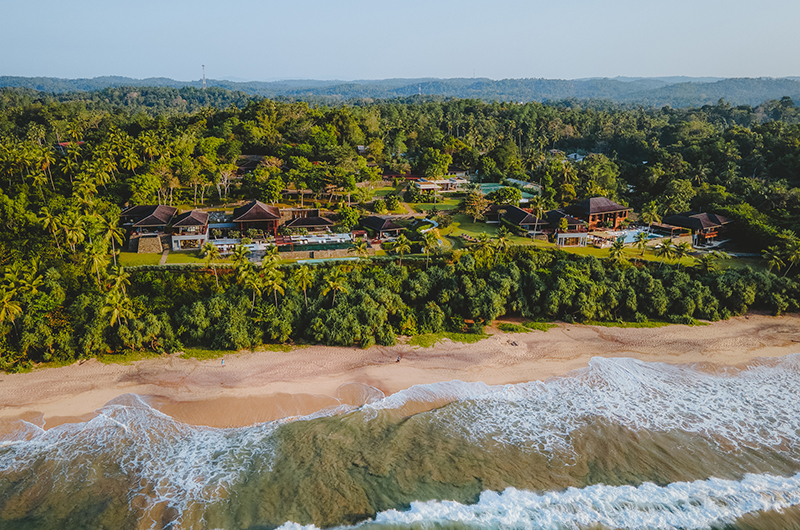A teardrop shaped island riddled with lush tea plantations and ancient temple ruins; framed by golden sand beaches and palm trees swaying in the breeze. It might sound like a fairy tale, but in Sri Lanka, the fantasy comes to life. Add to this the scenic train rides, exotic safaris, pumping surf breaks and above all, the warm smiles of the locals – and you have the unique magic of Sri Lanka.
Overview
From the Teardrop of India to the Pearl of the Indian Ocean, Sri Lanka is known by many evocative names. And no wonder – the island does have an undeniable magic to it. Though Sri Lanka is fast gaining traction as a must visit destination, the island still maintains that delicious, untamed feel of a hidden gem: something you have discovered on your own instead of following the trodden tourist track.
Sri Lanka’s allure lies in a unique mix of distinctive local culture, rich history and incredible natural scenery. The country is home to eight UNESCO world heritage sites (including the 16th century Galle Fort and the ancient city of Sigiriya) and wows with its tea plantations and stunning beaches which attract sun worshippers and surfers alike. Unlike more established tourist destinations where the smiles and greetings might start to feel forced and calculated, in Sri Lanka, the warm hospitality of the locals goes more than skin deep. We’ve said it before and we’ll say it again: the time to visit Sri Lanka is now, before the word gets out, once and for all.
History & Culture
The history of Sri Lanka is rich and varied – the first human remains found on the island date back some 35,000 years. Due the island’s location along busy trade routes, Sri Lanka has long been influenced by international traders, travellers, invaders and missionaries visiting the island. The two main ethnic groups – the Sinhalese and Tamils – both originally arrived from India. Buddhism has thought to have arrived in the third century BC and remains the state religion to this day. By the time the Portuguese arrived in the 16th century, Sri Lanka was divided into three kingdoms: the Tamil kingdom of Jaffna and the Singhalese kingdoms of Kandy and Kotte. The Portuguese were followed by the Dutch and the British. Sri Lanka (thus far known as Ceylon) gained independence from the British in 1948. After a decades long conflict between the Tamils and the Sri Lankan army, the two parties struck peace in 2009. The peace gave a huge boost to local tourism and Sri Lanka was named the top country to visit in 2019 by Lonely Planet.
Planning Your Trip to Sri Lanka
Sri Lanka is a large island where the must-visit destinations are well spread apart, so planning an itinerary that covers all the items on your travel bucket list is key. Ideally, you would have at least two weeks to explore the country. Our Sri Lanka travel guide aims to give you the essential information, list the most popular things to do in Sri Lanka, provide more information on locations you want to visit, and finish with some inspiration from our travel writers.
Sri Lanka Weather
Sri Lanka can be considered a year-round destination, though the country is affected by two monsoons. As a rule of thumb, you should plan to visit the west coast between October – January and head to the east between May – September. You can read more about the weather in Sri Lanka here.
Things To See & Do in Sri Lanka
Sri Lanka offers an incredibly rich landscape and unique culture for travellers from far and wide to explore. From rolling tea plantations to ancient temple ruins and from golden sandy beaches to age-old healing traditions, Sri Lanka is simply waiting to sweep you off your feet. The busy capital city of Colombo works as most travellers’ first introduction to the country, while beautiful beaches and Galle Fort await on the southwest coastline. Heading east, you’ll reach the famed national parks. Travelling inland to the heart of the island, you’ll discover the ancient city of Kandy, rambling train lines and lush tea fields.
Attractions
Sri Lanka is a land of wonders, with stunning natural scenery and renowned cultural landmarks to leave you breathless. The landscape varies from misty tea hills to sun kissed beaches, while the cultural highlights range from colonial grandeur to ancient relics.
CULTURE
Sri Lankan culture is coloured by influences from far and wide, thanks to the island’s position along busy trade routes. What most travellers remember the most from their visit are the genuine warm smiles and hospitality of the local people. Around 70% of the population are Buddhist, with stunning temples dating back centuries. Besides religion, the country’s colonial past is present in beautifully preserved architecture throughout the country and of course, the country’s enduring love of cricket. Galle Fort which occupies the island’s southwestern tip and is considered a must when visiting Sri Lanka, dates back to the 16th century and is just one of the country’s eight UNESCO World Heritage Sites.
TEMPLES
With a large Buddhist majority and a notable Hindu minority, Sri Lanka is home to stunning temples scattered across the island. Here are the most iconic temples to visit:
- Temple of the Tooth: Part of the royal palace complex in Kandy, the temple houses the relic of the tooth of the Buddha.
- Gal Viharaya: A rock temple dating back to the 12th century, with stunning rock relief statues of the Buddha.
- Dambulla Cave Temple: A World Heritage Site and the largest cave temple complex in Sri Lanka.
NATIONAL PARKS & NATURE
Sri Lanka’s natural landscape is nothing short of stunning and you can get a feel of it simply riding through tea fields and jungle on a train (the most famous route runs from Ella to Nuwara Eliya). Here are the most famous national parks and natural landmarks in Sri Lanka.
- Yala National Park: Most visited national park in Sri Lanka, with frequent elephant, buffalo and crocodile sightings.
- Udawalawe National Park: One of the best places for spotting wild elephants.
- Bundala National Park: Less crowded than Yala, with frequent animal sightings on jeep tours.
- Horton Plains National Park: Home to World’s End, a stunning escarpment with an 800-metre drop.
- Sigiriya: “Lion Rock” is an ancient rock fortress dominated by a 200-metre rock column.
- Adam’s Peak: 2,200 metre high mountain famous its “sacred footprint”, considered the footprint of Buddha, Shiva or Adam by different traditions.



Relaxation
Visiting Sri Lanka is an adventure – but the island also invites you to slow down and live life in the here and now. With its pristine sandy beaches and age-old healing traditions, Sri Lanka is the perfect place to truly relax and unwind.
BEACHES
Sri Lanka’s coastline is blessed with some of the most stunning beaches on the planet. Unlike other more touristic destinations, the beaches in Sri Lanka tend to be blissfully uncrowded. Here are the most popular beaches to visit in Sri Lanka.
- Mirissa: A long, relaxed beach with golden sand, lined by restaurants and cafes, with a few surf spots.
- Unawatuna: Arguably the most popular beach in Sri Lanka, this crescent shaped beach has golden sand and draws in crowds.
- Hikkaduwa: One of the best surf spots in Sri Lanka, a convenient drive up the coast from Galle Fort.
- Bentota: An up and coming, broad sandy beach with seasonally safe swimming on the west coast.
- Arugam Bay: A lovely sandy beach popular with surfers, located on the less-frequented east coast.
- Weligama: Home to the famous Instagram swing hanging from a palm tree over the beach.<\li>
- Tangalle: Beautiful beach with a relaxed vibe and palm trees framing the sand.
SPA TREATMENTS
For those looking for some serious R and R, Sri Lanka is one of the best destinations for discovering pure spa bliss. Ancient Ayurvedic traditions have been passed down through generations over thousands of years and today, massages and other pampering treatments are offered in luxury spas and modest local establishments throughout the country. To enjoy the royal treatment, you can also enjoy spa treatments in the privacy of your villa.



Tours & Activities
Sri Lanka is a large island with varied landscape and distinctive local cultures simply waiting to be explored. More so than most destinations, a trip to Sri Lanka calls for an itinerary to help you make the most of your time on the island. Visiting a tea plantation is a must and the same goes for exploring the centuries old Galle Fort. The national parks are famed for their elephant sightings – and then there are the thrilling activities, ranging from mangrove safaris to hot air balloon rides and beyond.






Eating & Drinking
Like the country itself, Sri Lankan food feels new and exciting – it’s reminiscent of other Asian cuisines, namely Indian and Indonesian, but still has a unique character all its own. While a majority of the population are Buddhist, vegetarian food as such is not a “thing” in Sri Lanka. Thanks to a huge variety of veggie curries, rotis and hoppers, finding vegetarian dishes won’t be a problem. This being an island, seafood is heavily represented. Most restaurants serving international cuisine are restricted to the capital city of Colombo, though venues catering to travellers do offer Western food across the country (with varying levels of success).
Local Cuisine
Sri Lanka boasts a rich culinary tradition all its own. Though it would be easy to assume (and indeed, many visitors do) that Sri Lankan food is just another strand of Indian cuisine, the island nation offers its own unique flavours. Rice and curries are staples of the local food, with coconut heavily featured, whether that’s oil for frying or milk for adding creaminess to a curry. Spices like chilli, turmeric, cinnamon and cardamom add a unique zing to the dishes. Here are a few of our favourite Sri Lankan dishes to get you started.
KOTTU ROTI
Kottu roti is arguably the most famous Sri Lankan dish out there and a beloved street food staple. The dish is made of roti (a type of Sri Lankan bread), vegetables, egg and/or meat and spices.
HOPPERS
Another Sri Lankan favourite, hoppers are essentially Sri Lankan crepes made from coconut milk and rice flour. Hoppers can be served with egg, curry or a spicy sambal – they also make for a fabulous breakfast base.
PARIPPU CURRY
Parippu curry, also known as dhal curry, is one of the most common curries in Sri Lanka. This creamy yellow curry is cooked from lentils and usually comes served with rice, roti or paan.
POLOS CURRY
Polos curry is cooked from young jackfruit which when cooked is reminiscent of the consistency of pulled pork – and tastes amazing!
PAAN, ROTI AND PAPADAM
A hearty Sri Lankan feast is not complete without a delicious side of local bread. Paan is essentially roasted bread, roti is coconut flat bread and pappadam is a crispy type of chip – and they are all delicious.
POL SAMBOL
Like most Asian countries, Sri Lankan cuisine relies on a bit of chilli to add a bit of punch. Pol sambol or coconut sambal is one of the most unique condiments made from grated coconut, chilli powder, lime juice and onion.
GRILLED SEAFOOD
While not Sri Lankan per se, we highly recommend feasting on some fresh seafood while visiting the country. Beachfront restaurants and villas on the south coast serve scrumptious seafood barbecues prepared from the catch of the day.



Drinking & Nightlife
Sri Lanka has a lot to offer but a vibrant nightlife is not really on the menu. While the capital city of Colombo does have nightclubs and bars, the areas favoured by tourists don’t really offer these facilities. While you might find the occasional beach party in areas like Hikkaduwa or Unawatuna, most travellers heading to Sri Lanka are not looking for an all-night rave. Instead, a night out in Sri Lanka might mean chilling on the beach with your toes in the sand or enjoying a long dinner with friends and family in the privacy of your villa, prepared by your personal chef. It’s good to keep in mind that a lot of the properties don’t stock alcohol but guests are welcome to bring their own wine and spirits with them.



Neighbourhoods
Sri Lanka spans some 65,610 square kilometres, measuring 435km (270 mi) from north to south and 240km (149 mi) from east to west. The south coast is the most popular area, offering beautiful sandy beaches, with the UNESCO protected Galle Fort occupying the island’s southwest tip. Travelling east, you’ll discover the island’s most famous national parks offering unforgettable elephant, buffalo and crocodile sightings. Central Sri Lanka is lush hill country known for tea fields, stunning hiking trails, scenic train rides and the ancient city of Kandy. The east cost offers surf breaks and beach life away from the beaten path, while the northern shores are closely connected to southern Indian culture.
West Sri Lanka
Travelling along the western coastline, the hectic bustle of Colombo gives way to relaxed beach life.

Colombo
Home to the main international airport, Sri Lanka’s busy capital city is most travellers’ first introduction to the country.

Bentota
An up-and-coming beach destination with a wide sandy beach and access to water sports.

Hikkaduwa
A popular beach destination with relaxed dining and surfing, a short drive from Galle Fort.
South Sri Lanka
The most popular part of the island known for its golden sand beaches and UNESCO-protected Galle Fort.

Galle
The southwest tip of the island is home to the UNESCO protected Galle Fort dating back to the 16th century.

Unawatuna
A popular beach resort with a palm lined beach, offering restaurants and guest houses close to the shoreline.

Koggala
A relaxed coastal town home to a beautiful beach and a tranquil lake surrounded by lush nature.

Mirissa
An irresistibly relaxed beach town with the occasional beach party and opportunity for whale watching.

Tangalle
One of the last towns on the coast before the great expanse of the national parks, known for its paradise beaches.

Yala
The most famous national park in Sri Lanka with near guaranteed elephant, crocodile and buffalo sightings.
Central Sri Lanka
Central Sri Lanka offers fresh mountain air amidst tea fields, with stunning nature complemented by cultural attractions in the city of Kandy.

Kandy
Hugging a lake in the misty hill country, this historic city exudes cultural history and houses the famous Temple of the Tooth.

Nuwara Eliya
The “Little England” of Sri Lanka boasts cool mountain air, lush tea plantations and colonial British history.

Ella
A charming hill country village offering stunning hiking trails, located along iconic train lines.
North East Sri Lanka
The East and North shores remain off most travellers’ radar but offer stunning beaches, great surfing and unique local culture.

Jaffna
The northern tip of Sri Lanka is rich with Hindu traditions and a bastion of local Tamil culture.

Uppuveli
A small beachfront village hidden from the crowds, with a palm-lined beach and a selection of relaxed restaurants.

Arugam Bay
A laidback beach town with a crescent shaped beach offering some of the best surf breaks in Sri Lanka.
Sri Lanka Villas
There are over 70 Ministry Approved villas in Sri Lanka, ranging from beachfront estates to restored colonial mansions dating back centuries. Sri Lanka villas range from around USD $250 per night for a three-bedroom villa to over USD $15,000 per night for an all-inclusive 15-bedroom luxury villa. Most of our villas have dedicated staff including: butlers, chefs, nannies, 24-hour security personnel, drivers and many other services you won’t find in a hotel.
Practical Information
Getting There
Bandaranaike International Airport is Sri Lanka’s primary international airport, located about 30 kilometres north from the capital city of Colombo. Technically, there is another international airport, Mattala Rajapaksa, located in the southern province but this airport offers very limited connections. Bandaranaike International Airport is connected to major cities in Asia, Australia, the Middle East and Europe. Direct flights to Sri Lanka are available from destinations including Melbourne, Singapore, Jakarta, Kuala Lumpur, Dubai, Hong Kong, Tokyo, New Delhi and London. Airlines flying direct to Sri Lanka include SriLankan Airlines, Singapore Airlines, Cathay Pacific, Japan Airlines, Air India and AirAsia.
Travellers heading to Sri Lanka should obtain an Electronic Travel Authorization before arriving in Sri Lanka. ETA holders will be issued a 30 day Short Visit visa at the port of entry in Sri Lanka. Tourist visas are priced at USD $20-35 depending on the applicant’s nationality. Nationalities of 48 countries (including Australia, USA and member states of the European Union) are eligible for the ETA fee waiver program. Please note your passport must be valid for six months after your date of arrival in Sri Lanka.
AIRPORT TRANSFER
There is no public transport to get you from the airport to your accommodation, so the only option is to use a private driver or a taxi. Ministry of Villas can arrange a chauffeur to greet you upon arrival and escort you to your villa. This is by far the most hassle-free way of starting your Sri Lankan adventure.
Getting Around
There are a few options for getting around Sri Lanka. Here, we’ve ranked them according to our recommendations for first-time travellers.
PRIVATE CAR
By far the most hassle-free way of exploring Sri Lanka is hiring a car and driver. This provides flexibility and allows you to plan your own itinerary. You can hire a driver for a full day or for a single trip. Ministry of Villas can arrange a private car and chauffeur for you. This little luxury is remarkably affordable and we can also help you arrange an itinerary, instructing your driver in advance.
TUK-TUK
For short distances, you can use a three-wheeled tuk-tuk which you will find on every street corner in cities. Alternatively, you can ask your accommodation to arrange a tuk-tuk for you. Expect to bargain and always agree on the price before getting in.
TRAIN
The most scenic way to make your way across Sri Lanka is by train. Rather than a mode of transport, train travel in Sri Lanka is an experience in and of itself. Train travel is also very affordable and offers delightful local colour. There are three main train lines: South from Colombo; East from Colombo and North from Colombo. The most scenic lines run in the hill country, with the tracks between Haputale and Ella considered as some of the most scenic in the world. Read more about train travel in Sri Lanka here.
Etiquette
Sri Lanka is one of the most westernised countries in South Asia with a friendly attitude towards visitors, so navigating the local customs tends to be easy. Like anywhere else in the world, common sense and respect for the local culture will go a long way.
BARGAINING
Fixed-priced shops aside, shopping in Sri Lanka will often mean you’ll have to bargain. You should ask for half the price originally quoted and then expect to pay a little over the price you originally asked for. Remember not to go overboard and keep a sense of humour about you – the amounts you’re arguing over will often be minuscule.
BODY LANGUAGE
Elaborate public displays of affection are best avoided. Like in many other countries, you should avoid using your left hand to greet people or when handling food or money as the left hand is considered unclean.
CLOTHING
While the attitude towards tourists tends to be relaxed, Sri Lanka is a fairly conservative country. Avoid showing excessive amounts of skin and donning swimwear outside the beach or pool. Nudity and sunbathing topless are not allowed on any Sri Lankan beaches.
TEMPLES
While many Buddhist temples have become popular tourist attractions, they remain holy sites and should be treated with respect. Visitors should dress appropriately – this means removing your shoes and headwear before entering and wearing clothes that cover your shoulders and knees. Don’t get your photograph taken in front of a Buddha statue with your back facing the image as this is considered disrespectful.
TIPPING
Tipping for good service is standard practice, meaning tips should be earned rather than expected. This includes tipping the staff at hotels, villas and restaurants, as well as tour guides and drivers. For housekeeping staff, LKR 100 per day (USD $0.50) is typical while at upscale restaurants, a tip of around LKR 200 (USD $1) will suffice. You should tip your driver around LKR 500 (USD $3) per day for a job well done.
Health & Safety
Since the end of the civil war in 2009, conditions in Sri Lanka have stabilised and travelling in the country is generally safe. Countries including Australia and the US advice caution due to terrorism – to put this in perspective, the same advice is given for countries like France. The advice we provide here is a general guide only and does not replace the advice of a doctor trained in travel medicine.
MEDICAL CLINICS
The quality and cost of healthcare in Sri Lanka can vary dramatically. Visitors are advised to use medical clinics and hospitals designed to cater to expats – these can mainly be found in Colombo and to some extent in the Galle area. For minor injuries and ailments in more remote areas, your villa or hotel may direct you to a local clinic. Before you travel, make sure your medical insurance will cover you.
PHARMACIES
Most medication, including antibiotics, can be purchased over the counter without prescription. You’ll find well-equipped pharmacies in Colombo and other larger cities.
REQUIRED VACCINATIONS
The only required vaccination as stipulated by international regulations is for yellow fever. Proof of vaccination will be required if you are travelling from a country with risk of yellow fever virus (namely sub-Saharan Africa and countries in South America). This includes transit of more than 12 hours in a country with a risk of yellow fever. Other vaccines, including those for hepatitis A and typhoid, may also be recommended by your doctor. Make sure you consult your doctor well in advance to allow time for any vaccinations they might recommend.
RISK OF INFECTION
Traveller’s diarrhoea: This is the most common ailment affecting travellers. You can reduce your risk of catching it by avoiding food served at room temperature and food from street vendors and by only consuming sealed bottled water and ice made from bottled water.
Dengue Fever: There is no vaccine against this mosquito borne disease and infection can only be prevented by avoiding mosquito bites. Symptoms of dengue include high fever, severe head and body aches, nausea and fatigue. It’s vital to see a doctor to be diagnosed and monitored.
Hepatitis A: A food and waterborne virus which can be prevented by vaccination.
Hepatitis B: A virus spread by body fluids which can be prevented by vaccination.
Rabies: A disease spread by the bite or lick of an infected animal which can be prevented by vaccination.
Typhoid: A bacterial infection spread via contaminated food and water where vaccinations are 80% effective. Its symptoms are a high and slowly progressive fever, headache and possibly a dry cough and stomach pain. Typhoid is diagnosed by blood tests and treated with antibiotics.
SWIMMING
Many of Sri Lanka’s beaches are subject to heavy surf and strong currents. Be careful when swimming over coral and never walk on it. It can be very sharp and coral cuts are easily infected. In addition, you are damaging a fragile environment. Lastly, water pollution is a problem in busy neighbourhoods. Avoid swimming near open streams flowing into the sea as they are often contaminated by run-off from built-up areas.
THEFT
Violent crime against foreigners is generally infrequent, but bag snatching and petty theft does occur. Credit card fraud does occur and travellers are advised to use cash whenever possible. Take the same precautions you would when travelling anywhere in the world, don’t leave valuables on a beach while swimming and use in-villa safes to store your valuables.
WATER
Tap water in Sri Lanka is not safe to drink. Bottled water is widely available and cheap, however Ministry of Villas encourages visitors to keep a reusable water bottle to reduce plastic consumption.
Need to Know
Here’s the absolute essentials explained.
CURRENCY
Sri Lankan rupee (LKR) is the local currency. Since Sri Lankan rupee is not considered a major currency, you’re unlikely to get a good exchange rate outside the country so it’s best to exchange currency once in Sri Lanka. Credit cards are widely accepted throughout the country and ATMs are generally easy to find in more populated areas.
LANGUAGES
Sinhala and Tamil are the official languages of Sri Lanka, but English is widely used, especially in tourist areas. Sinhala is the native language of around 16.6 million people, while Tamil speakers are estimated at around 4.7 million. Sinhala uses the Sinhala abugida script, but Latin script is widely used throughout the country.
POPULATION
Sri Lanka’s population is approximately 21 million, with around 2.2 million tourists visiting annually. The population is concentrated on the southwest coastline, most notably around the capital city of Colombo.
RELIGION
Buddhism is the state religion of Sri Lanka. Around 70% of the population practice Theravada Buddhism; with minority Hindu, Muslim and Catholic communities in descending order of prevalence.
TELECOMMUNICATION
Sri Lanka’s country code is +94. You can purchase a local SIM card directly at the airport, with major operators offering prepaid “tourists plans.” Service centres selling SIM cards are also prevalent throughout the country. Once you run out of data, you can easily top up your SIM card at any store or service counter displaying your provider’s logo. Most villas provide broadband Internet and free WiFi is common in cafes, restaurants, hotels and shopping malls.
TIME ZONE
Sri Lanka follows Indian Standard Time (IST), which is 5 hours and 30 minutes ahead of Greenwich Mean Time (GMT) / Universal Time.
Travel Insurance
Travel insurance is absolutely essential for every traveller. A typical travel insurance policy will have coverage for a traveller’s main concerns, including trip cancellations, medical emergencies, travel delays, and lost luggage. Most policies are built to be comprehensive to protect travellers from a variety of events that may cause financial loss before or during their trip. Some policies specifically exclude ‘dangerous activities’ which can include scuba diving, renting a local motorcycle and even trekking.
Sri Lanka Travelogue
From exploring Galle Fort to soaking up the sun on the coastline and from visiting tea plantations to inspecting jaw-dropping villas, our team loves exploring the best Sri Lanka has to offer. Check out our latest Sri Lanka blog posts written by experienced Ministry of Villas travel writers.
